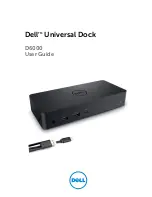
Version 1.0
©Copyright 2020, Ambient LLC. All Rights Reserved.
Page 40
mb) are considered high pressure and relative pressure measurements less than 29.92 inHg are
considered low pressure.
To determine the relative pressure for your location, locate an official reporting station near
you (the internet is the best source for real time barometer conditions, such as Weather.com or
Wunderground.com), and set your weather station to match the official reporting station.
(4)
Only use this if you improperly installed the weather station sensor array and did not point the
direction reference to true north.
(5)
The default conversion factor based on the wavelength for bright sunlight is 126.7 lux / w/m
2
.
This variable can be adjusted by photovoltaic experts based on the light wavelength of
interest, but for most weather station owners, is accurate for typical applications, such as
calculating evapotransporation and solar panel efficiency.
(6)
Wind speed is the most sensitive to installation constraints. The rule of thumb for properly
installing a wind speed sensor is 4 x the distance of the tallest obstruction. For example, if
your house is 20’ tall and you mount the sensor on a 5’ pole:
Distance = 4 x (20 – 5)’ = 60’.
Many installations are not perfect and installing the weather station on a roof can be difficult.
Thus, you can calibrate for this error with a wind speed multiplier.
In addition to the installation challenges, wind cup bearings (moving parts) wear over time.
Without a calibrated source, wind speed can be difficult to measure. We recommend using a
calibrated wind meter (available from Ambient Weather) and a constant speed, high speed fan.
(7)
The rain collector is calibrated at the factory based on the funnel diameter. The bucket tips
every 0.01” of rain (referred to as resolution). The accumulated rainfall can be compared to a
sight glass rain gauge with an aperture of at least 4”. The following is a link to an accurate
sight glass rain gauge:
http://www.ambientweather.com/stprraga.html
Make sure you periodically clean the rain gauge funnel.
6.6.3
Calibrating the Wind Direction for the Southern Hemisphere
The rain collector is designed to face south for customers in the Northern Hemisphere. If you live in
the Southern Hemisphere, you will need to point the rain collector to the North and select Hemisphere:
S from the setup page shown in Figure 42.
Note: Changing the hemisphere setting will automatically switch the direction of the moon phase on
the display.
6.6.4
Firmware Updates
To download the latest version of firmware to your computer, visit:
https://help.ambientweather.net/product/ws-7079
To update the firmware, browse to the firmware file saved on your computer and tap
Upload










































